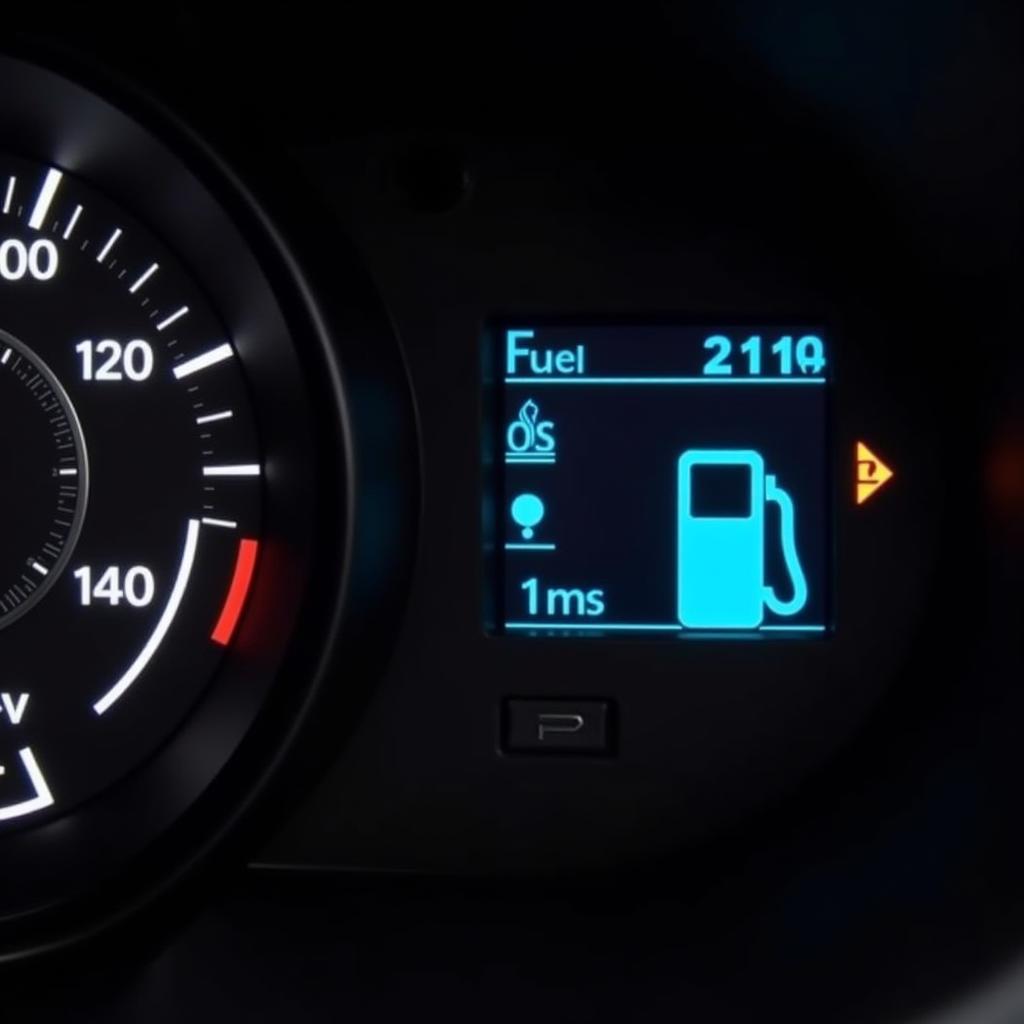The gas measurement tool gauge in a car, more commonly known as the fuel gauge, tells you how much fuel is left in your tank. It’s a crucial instrument for any driver, preventing unexpected stops and ensuring you reach your destination. Understanding how it works, its potential problems, and how to maintain it can save you time, money, and frustration on the road.
Understanding Your Car’s Fuel Gauge
The fuel gauge operates using a simple yet effective system. A float, connected to a variable resistor, sits inside the fuel tank. As the fuel level changes, the float rises or falls, adjusting the resistance. This change in resistance is then translated into a reading on your dashboard, indicating the fuel level. It’s not always a perfect system, though, and various factors can influence its accuracy.
Common Fuel Gauge Issues and Troubleshooting
Fuel gauges, like any other car component, can experience issues. A faulty reading could mean you’re running on empty when the gauge shows half a tank, or vice-versa. Knowing the common problems can help you diagnose and address them effectively. Some common issues include a stuck float, a malfunctioning sending unit, or even wiring problems.
A common culprit is the sending unit, which can become corroded or wear out over time. This can lead to inaccurate readings or complete failure. Another common problem is a sticking float, which can be caused by debris in the tank or a mechanical fault.
If your fuel gauge is acting up, start by checking the fuse. A blown fuse can easily cause a complete outage. If the fuse is fine, you might need to delve deeper into the sending unit or float. While some basic checks can be done at home, it’s often best to consult a qualified mechanic for a proper diagnosis and repair.
How to Maintain Your Fuel Gauge for Optimal Performance
Maintaining your fuel gauge doesn’t require extensive effort. Regular checks and simple preventative measures can go a long way in ensuring its accuracy and longevity. One crucial tip is to avoid running your tank too low frequently. This can expose the fuel pump to excess heat and wear, potentially leading to premature failure. Additionally, keeping your tank relatively full can help prevent condensation buildup, which can contribute to rust and corrosion in the fuel system.
Another good practice is to use high-quality fuel. Contaminants in low-quality fuel can clog the fuel filter and even damage the sending unit. Regularly checking your fuel filter and replacing it when necessary is also a key part of maintaining your entire fuel system, including the gauge.
Why is the Fuel Gauge Important?
Imagine being stranded on a deserted highway late at night because your fuel gauge malfunctioned. A reliable fuel gauge is essential for planning trips, ensuring you have enough fuel to reach your destination, and avoiding the inconvenience and potential danger of running out of gas. It’s a small component with a big impact on your driving experience.
“A properly functioning fuel gauge provides peace of mind, allowing drivers to focus on the road and enjoy their journey without the constant worry of running out of fuel,” says Michael Carter, Senior Automotive Technician at Carter’s Auto Repair.
What’s the Gas Measurement Tool Gauge Called in a Car?
Simply put, it’s called the fuel gauge. While some may refer to it as the gas gauge, the technically correct term is fuel gauge, as it measures the level of any type of fuel, be it gasoline, diesel, or even alternative fuels.
How Accurate is a Car’s Fuel Gauge?
While fuel gauges are designed to be reasonably accurate, they are not always precise. The float-based system can be affected by the car’s angle on an incline or decline, leading to slight variations in the reading. Furthermore, the gauge is calibrated to provide a general indication of fuel level, not a precise measurement.
“It’s important to remember that the fuel gauge is a guide, not a gospel,” advises Susan Miller, Automotive Engineer at Miller Automotive Solutions. “Always err on the side of caution and refuel before the needle gets too close to empty.”
 Modern Digital Fuel Gauge Display in a Car
Modern Digital Fuel Gauge Display in a Car
Conclusion
The fuel gauge, a seemingly simple instrument, plays a vital role in your car’s operation. Understanding how it works, its potential issues, and how to maintain it can greatly enhance your driving experience. By taking care of your fuel gauge and the entire fuel system, you can avoid unexpected breakdowns, save money on repairs, and enjoy peace of mind on the road. Remember, a properly functioning fuel gauge is more than just a convenience; it’s a crucial component for a safe and enjoyable driving experience. So, next time you glance at your fuel gauge, appreciate the simple yet essential function it performs.
FAQ
- What should I do if my fuel gauge suddenly stops working?
- How often should I replace my fuel filter?
- Can a bad fuel pump affect the fuel gauge reading?
- Is it harmful to consistently run my car on low fuel?
- How can I improve the accuracy of my fuel gauge?
- What are the signs of a faulty fuel sending unit?
- Can extreme temperatures affect fuel gauge readings?
Suggested Further Readings
- Fuel System Maintenance: Tips and Tricks
- Understanding Your Car’s Dashboard Warning Lights
- Common Car Problems and Solutions
Need more assistance? Contact us via WhatsApp: +1(641)206-8880, Email: [email protected] or visit us at 910 Cedar Lane, Chicago, IL 60605, USA. We have a 24/7 customer support team ready to help.

Leave a Reply